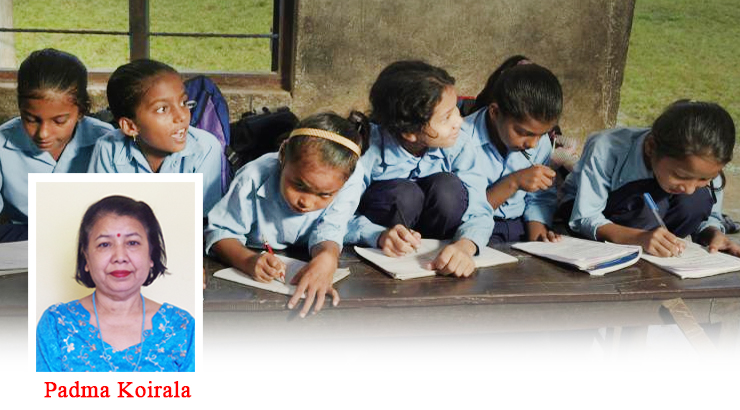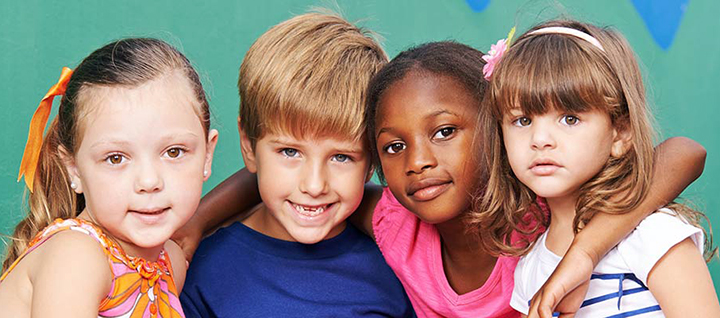
Childhood is the state and stage of being a child. It is one of the phases of human development, with the age span ranging from 2-11 for girls and 2-12 for boys. This span is further classified into two stages where the first half is often called early childhood, while the second one is called late childhood.
UNICEF states that childhood is the time for children to be in school and at play, to grow strong and confident with the love and encouragement of their family and an extending community of caring adults. It is a precious time in which children should live free from fear, safe from violence and protected from abuse and exploitation. As such, childhood means more than just the space between birth and adulthood. It refers to the state and condition of a child’s life, to the quality of those years.
Children at the late childhood go through a difficult phase. Because of cultural pressure and expectations to learn certain things, this phase is quite challenging for them. It is also the phase when they accumulate social, political and economic values.
A widespread discrimination for boys and girls can be observed during this phase. Usually girls don’t get enough opportunity to participate in the activities they are interested in. They also lack freedom to explore and have travel experience as well. Girls are more malnourished as well. At our national level, the number of girl children who drop out of school is more than that of boys. Girls as well as boys are abused physically, sexually and emotionally.
YEP International (2015) states in its article “Discrimination Against the Girl Child” that while children around the world continue to face various form of adversities in the 21st century, girl children in particular are subjected to multiple forms of oppression, exploitation and discrimination due to their gender.
The study report has presented their views against female infanticide, sex selective abortion, economical backwardness, female genital mutilation, etc.
Situation in India
Salam Balak Trust in their 2015 article ‘Children in India’ estimated the number of children in India to be around 440 million. This population happened to be more than the entire population of North America across all age groups. It is also estimated that one out of every five children is an Indian, with 27 million births every year. However, the same estimates also show that around 2 million children die in India every year, before they reach the age of five, with malnutrition, anemia and low immunization considered to be the major causes for this situation.
Majority of the children who are enrolled in school don’t actually attend it regularly. Almost 12 million children are also estimated to be child workers in the country. Meanwhile, 2/3rd of children are estimated to be victims of physical, sexual or emotional abuses.
A Report on Nepal
In 2010, Nepal’s GDP per capita was USD367, making it one of the poorest countries in the world. According to the Child Poverty and Disparities Study (2010), 2/3rd of the Nepali children they are severely deprived, with child poverty rates at the highest levels in rural areas compared to urban localities. Deprivation of food and sanitation services is very common. Malnutrition is also a severe problem in the country. Nepal also has a high childhood mortality rate with treatable diseases like diarrhea, acute respiratory infection and malaria among the major causes. In fact nearly 1/10th of the children didn’t attend school at all.
The study presented recommendations such as tackling malnutrition, increasing free public health care, providing safe sanitation facilities, spreading education, protecting child rights and ensuring social measures to uplift the situation of Nepali children.
All these facts show that children are not in sound condition to be happy. There is urgent need to take serious thoughts to improve their situation.

A study about children in the USA
In a 2015 article in the LA Times titled “Child Poverty in US is at its highest point in twenty years”, it was mentioned that after the Great Recession, child poverty in the US is at the highest level in 20 years. Child poverty is linked with increased risk of injuries, infant mortality and premature death. One child dies every seven hours from abuse or neglect. The article suggested specific measures such as elimination of child poverty, funding pediatric research and investment in child nutrition programs for dealing with the problems faced by children in the US.
Conclusion
Across the world, children face various challenges. These challenges can only be mitigated by concerted efforts to make the general environment better for children. Except in a few developed countries, governments haven’t been able to adequately focus on bettering the lives of the children. Such issues can only be dealt with through highly committed social and governmental initiatives with proper guidance from experts in child development and psychologists.










